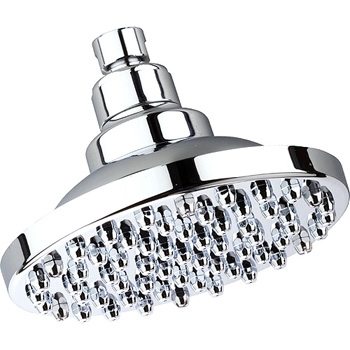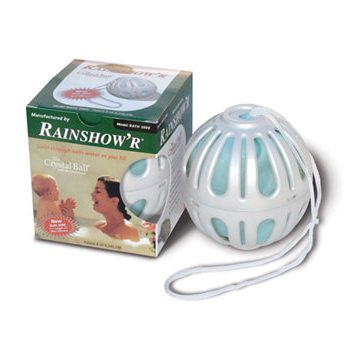“I had muscle spasms. Soon, it spread to my heart—my blood pressure and my heart rate would shoot up unexpectedly. Just getting up to use the bathroom would leave me out of breath with my heart racing, playing with my children was impossible, I went grocery shopping only with the help of an electric cart.
“My doctor told me I had anxiety, I was put on beta-blockers, antidepressants, antibiotics… I fell through the cracks of the medical system and felt lost and hopeless.
“Then I read a paper by Marie. She used a sauna detoxification and nutrition regimen to reverse symptoms appearing after chemical exposures. On the off-beat chance and hope for answers, I called her. I couldn’t believe she saw clients in Anchorage near where I live!
“Long story short, she probably saved my life. Toxic metals and chemicals were affecting my nervous system, my heart, my liver, my adrenal glands… My first step was to trash the most toxic food; my second to trash the most toxic lotions, deodorants, laundry products… I put my home on a diet.
“Working together, Marie and I improved how my body’s handled its toxic waste. She’s brilliant, we used specific foods, herbs, and supplements to fix the many imbalanced organs and systems. It’s been 6 months now and my blood pressure is fine without medications, I never feel my heart racing, and since I no longer have these problems any mood diagnosis is irrelevant. The best part is I’m feeling so well that I’m going to be the team mom for my son’s little league team! Oh, and I’ve lost 30 pounds.” –Amber S
Hidden from view yet persistent: Toxic chemicals and metals
There are more than 85,000 chemicals on the U.S. EPA’s Toxic Substances Control Act Chemical Substance Inventory (TSCA Inventory), updated approximately every six months. Of the nearly 15,000 categories of similar compounds, 1818 are “confidential”—proprietary to industry. Of the 3,000 high volume chemicals (used in excess of a million pounds a year), only 7 percent have been tested for safety and only a handful are regulated.
 Sadly, most policies and procedures still rely on “the solution to pollution is dilution.” Only if a chemical lasts (persists) in the environment are we likely to be exposed or accumulate a hazardous dose. If the chemical breaks down more quickly then it “goes away.”
Sadly, most policies and procedures still rely on “the solution to pollution is dilution.” Only if a chemical lasts (persists) in the environment are we likely to be exposed or accumulate a hazardous dose. If the chemical breaks down more quickly then it “goes away.”
Half-life: the amount of time required to reduce to half its initial value
Persistent: Chemicals and metals are considered “persistent” if their half life is longer than 2-months in water, 6-months in soil or sediment, and 2-days(!) in air
Non-persistent: having a “short” half-life under natural conditions
Scorecard compiles what’s in your local air and water, environment superfund sites—searchable by zip code.
What we don’t know, and never will know, is how chemical mixtures affect us. A few more terms:
Clearance rate: chemical clearance rate, described as a half-life, from human blood. Drugs and chemicals can be eliminated from the body or moved to another body compartment (stored in fat) or destroyed (and become something else, possibly more toxic)
Steady state: when chemicals are added at the same rate they are cleared
Here’s the catch: Cotinine, a breakdown product of nicotine, for example, can be detected in urine as it clears the body for about four days after one cigarette. With regular smoking or vaping, cotinine is detectable as much as three weeks after a person quits (about as long as the cravings last).
Most studies of “clearance rates” give a single chemical dose to an animal and then monitor the blood half-life and/or its detection in urine. That says nothing, NOTHING about how much remains stored in the body or what happens in people rather than animals.
And it says even less about continued exposure. When chemicals are added at the same rate as your body can get rid of them, could they cause health problems?
How much can I eat and still eat clean?
That depends…
“It seemed like I hardly ate anything but I couldn’t lose weight. I tried every diet and exercise plan I could find. I’d start to lose weight and then feel sick. Then I’d get stuck and no matter how little I ate no more weight loss.
“Marie helped me understand it wasn’t my willpower or diet failures but the toxicity I held onto that was making me sick. Once we started addressing this, my energy improved dramatically, I didn’t have blood sugar rollercoasters anymore, and – yes – the weight started peeling off.” –Jennifer L
This study shows that toxic chemicals (Dioxins and PCBs) accumulate faster than you clear them when you eat just one Atlantic (farmed) salmon meal per month. Just one meal per month! (more than half the salmon sold globally is farm raised). On the other hand, the same study shows that wild Alaska salmon can be eaten every day with no concern for toxicity (plus you are being heart healthy 😊
Health problems from accumulated dioxins and PCBs:
|
|
|
|
|
Butter from North America and Europe is high in PCBs; Australia & New Zealand grass-fed cows very low, Mexican butter is high in pesticides… sigh
Half of all U.S. milk contain various pesticides (including persistent DDT and heptachlor—no longer in use—as well as non-persistent pesticides such as Chlorpyrifos)
Toxic Soup: It all adds up
And that’s just a couple of well-known persistent chemicals—add in the non-persistent… you get toxic soup and any/all of these symptoms:
|
|
|
|
|
|
|
|
|
|
|
|
|
Lead, pharmaceutical drugs, arsenic, mercury, and cadmium are not considered biologically persistent toxicants but they have a huge effect on your health.…and higher risk of heart disease, obesity, and diabetes.
- Methylmercury (the form of mercury found in fish, mostly from coal emissions) increases cardiovascular disease risk nearly 10%
- Although DDT and most persistent pesticides have been discontinued in the U.S., we still manufacture and export them to under-developed countries. Then we buy fruits and vegetables back from those countries.
- “Non-persistent” pesticides like diazinon and chlorpyrifos, increase body mass index (BMI), percentage body fat, and C-reactive protein (a measure of inflammation).
A perfect storm…
If your liver, your lungs, your skin, your digestive tract… are turning their resources to removing chemicals and metals that weren’t even around 100 years ago, is it possible they aren’t doing their other vital functions? Let the fun begin! (sic)
With all this inflammation, the detox systems shut down.
The elephant in your living room: chemicals in your home
If this story seems depressing, my apologies. Our homes may need a diet more than we do.
Plug the hole in your boat first: then start bailing!
Start here:
- Have everyone take their shoes off at the door. This is an ancient tradition that shows respect for the home. We still practice it in Alaska, Hawai’I, Japan, India… if you don’t, you track in pollutants from all the particles stirred up in the air.
- Definitely create smoke and “vapes” free homes and offices. The tobacco industry couldn’t fake it, why can e-cigarettes? In 2009, the FDA warned that e-cigs contain diethylene glycol (antifreeze) and a 2015 study showed that e-cig vapor contains formaldehyde. Carcinogens.

- Switch from “dry cleaning” to wet cleaning. The chemicals in dry-cleaned clothing are the most fat-stored and persistent known (of those still legal). Commercial wet cleaning avoids the use of chemical solvents and produces beautiful garments.
- Check for and handle any mold. Use some common sense on this, before you bring in professional inspectors: Has there been water damage? Are there musty smells or visible mold growths in the showers or tubs?
- Air check. The biggest source of indoor air pollution comes from forced air units where ducts are not regularly cleaned and filters are not regularly changed. Best to get ducts cleaned annually and change filters every three months (monthly if you have pets).
- Vacuum cleaner check. Use one with a HEPA filter otherwise dust is being blown right back into your air.
- Water filters. The biggest source of chlorine is from taking a hot shower in chlorinated water. Please install a shower filter or use these handy and inexpensive bath ball dechlorinators. Read my post on drinking water here.

Eat to reduce inflammation
Before you start worrying about Paleo, ketogenic, gluten-free, raw and other popular diets, do something very simple: Get rid of ALL the processed foods that someone else made and put in a container:
- eat as many vegetables as you can, any and all—raw and cooked
- eat some fruit—not too much
- snack on nuts
- eat more wild-caught fish and less red meat (do make sure it’s grass-fed)
- sometimes have some legumes or whole grains
- cook with olive oil
- make your own salad dressings with olive, avocado, or walnut oil
- drink green tea and/or Roiboos tea daily
- it’s OK to have a glass of wine sometimes
- avoid dairy
Check out the delicious eats at OurNutritionKitchen.com


Leave a Reply
You must be logged in to post a comment.